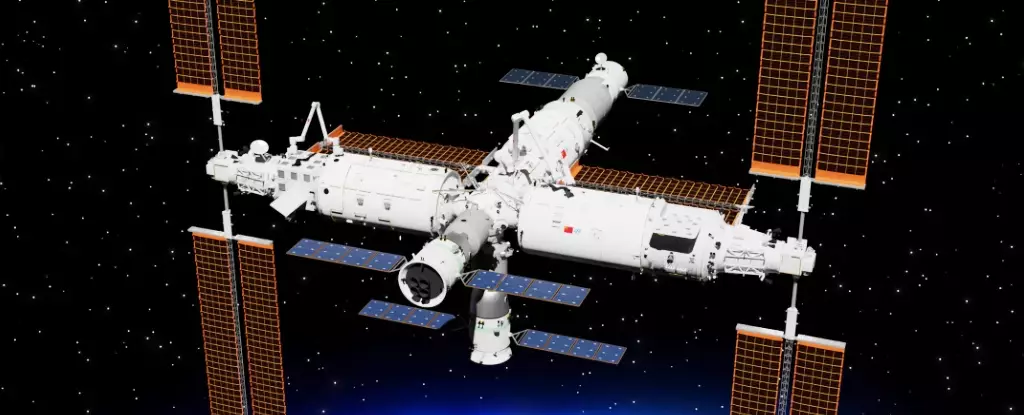Recent advancements in astrobiology have unveiled a remarkable new bacterium, Niallia tiangongensis, discovered aboard China’s Tiangong space station. The discovery may seem trivial at first glance, yet it offers profound implications not only for the future of space exploration but also for our understanding of microbial life in extreme environments. This unique bacterium was first identified by researchers from the Shenzhou Space Biotechnology Group and the Beijing Institute of Spacecraft System Engineering. After swabbing the space station to survey its microbial inhabitants, these scientists found that it carries characteristics unlike any previously observed on Earth.
What makes this discovery particularly compelling is its timing and location. Conducted in May 2023 as part of the China Space Station Habitation Area Microbiome Programme, the investigation contrasts starkly with similar studies performed aboard the International Space Station (ISS). This raises questions about microbial adaptability in differing space environments. The results from both investigations indicate that the microbiomes present in these disparate stations can be functionally and compositionally unique, hinting at the potential for diverse life forms adapting to the harshness of near-Earth space.
Characteristics of the New Species
Niallia tiangongensis has been noted for its unique capabilities, including its novel method of utilizing gelatin for nitrogen and carbon. This capability is crucial for the bacterium as it forms a defensive biofilm, enabling it to thrive when environmental conditions become adverse. Interestingly, the bacterium seems to have traded certain energy-utilizing abilities for this specialized function, showcasing just how adaptable these microorganisms can be. Such genetic adaptations challenge our existing paradigms about microbial survival and resourcefulness.
The bacterium is a close relative of Niallia circulans, which, until recently, was classified as a pathogenic strain of Bacillus. This lineage hints at the complexities of microbial evolution, especially under the alterations of extraterrestrial environments. The discovery raises pertinent questions about potential pathogenic risks for human astronauts who must navigate their missions in a closed-loop ecosystem. Like its cousin, N. tiangongensis demonstrates an admirable resilience, which could pose unforeseen health risks for individuals whose immune systems are already compromised.
The Implications for Space Travel
With aspirations sparkling on the horizon for missions to the Moon and Mars, understanding the microbial entourage of astronauts is paramount. While studying these microorganisms may seem like a niche facet of space exploration, it is fundamentally tied to human health and mission success. The fear that Niallia tiangongensis might pose a threat, especially given its relatives’ history of complicating health, underscores the urgency of carrying out further research. Inhabiting the space station alongside human passengers, these microbes may adapt in ways that are unfathomable within traditional Earth-centric models of microbiology.
Additionally, the adaptability of spaceborne microbes mirrors findings from previous missions. NASA’s clean rooms preparing for the Mars Phoenix mission uncovered dozens of microbial strains, including 26 distinct species. Their survival was attributed to specialized genes that govern DNA repair and provide resistance to harmful substances. These insights are crucial for formulating countermeasures that safeguard astronaut health. If we aim to send humans further into space, understanding these microbial dynamics is not merely an academic endeavor; it’s an essential pillar for the safety of astronauts.
Looking Towards the Future
As we peer towards a future filled with exciting possibilities in space exploration, the ramifications of the Niallia tiangongensis discovery highlight the interconnectedness of all life forms, terrestrial and extraterrestrial. We may not have full clarity about how this unique bacterium will influence the health of astronauts aboard the Tiangong station, but its remarkable survival tactics illuminate the many mysteries of life that exist beyond our planet.
Recognizing that some microbes can thrive among the stars, we must adopt a paradigm where we learn to coexist with them rather than merely attempting to eradicate them. In recognizing the potential for both challenges and opportunities that these microorganisms can bring, we stand at the cusp of a new understanding of life’s resilience and adaptability in the vast stretch of space—an understanding that could redefine what it means to be alive in a hostile universe.

